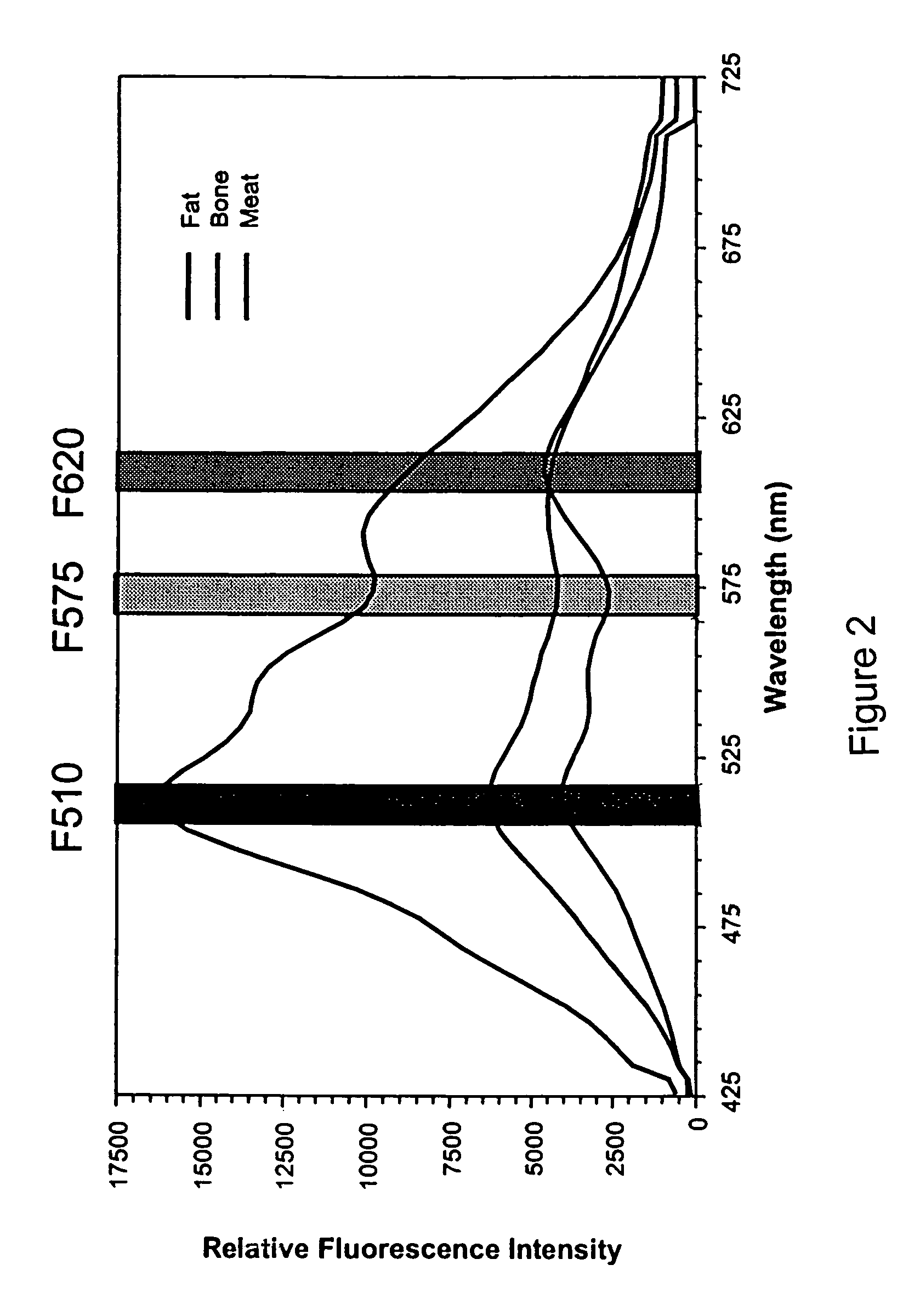Method to detect bone fragments during the processing of meat or fish
a technology for processing meat or fish, which is applied in the field of methods and equipment for detecting bone fragments near the surface of processed meat or fish, can solve the problems of manual detection of these contaminants, laborious and costly, and may not be completely removed from the flesh, and achieves the effect of increasing sensitivity and accuracy
- Summary
- Abstract
- Description
- Claims
- Application Information
AI Technical Summary
Benefits of technology
Problems solved by technology
Method used
Image
Examples
example 1
[0031]Various chicken meat portions (dark and white meats including fats) were diced and mixed randomly and placed approximately 1 cm thick on a nonfluorescent plate. Chicken leg, thigh and wing bones were cracked using a hammer to create bone fragments. Bone fragments were placed on top of the chicken meats such that both inner and outer surfaces of the bone fragments were exposed (FIG. 1). Hyperspectral fluorescence and reflectance images of the samples were acquired using a multispectral laser-induced fluorescence imaging system (MLIFIS), such as described in Kim et al. (2002, ibid) or Kim et al. [2003, Applied Optics, ibid). Samples were exposed to an excitation wavelength of approximately 360 nm, and fluorescence emissions were collected at 510, 575, and 620 nm. The emission spectra and fluorescence images at 510, 575, and 620 nm are shown in FIGS. 2 and 3. Ratio images were calculated from ratios of the fluorescence emissions at 620 nm / 510 nm and at 620 nm / 575 nm, as were the ...
PUM
 Login to View More
Login to View More Abstract
Description
Claims
Application Information
 Login to View More
Login to View More - R&D
- Intellectual Property
- Life Sciences
- Materials
- Tech Scout
- Unparalleled Data Quality
- Higher Quality Content
- 60% Fewer Hallucinations
Browse by: Latest US Patents, China's latest patents, Technical Efficacy Thesaurus, Application Domain, Technology Topic, Popular Technical Reports.
© 2025 PatSnap. All rights reserved.Legal|Privacy policy|Modern Slavery Act Transparency Statement|Sitemap|About US| Contact US: help@patsnap.com



